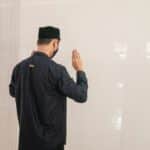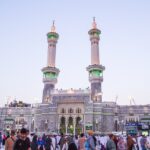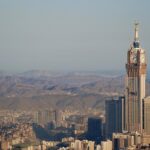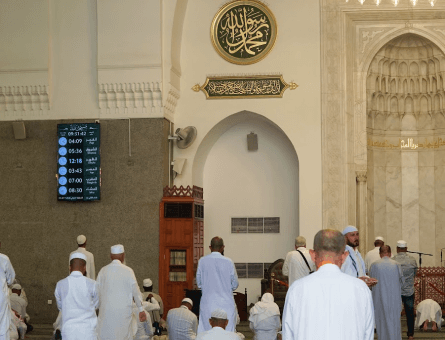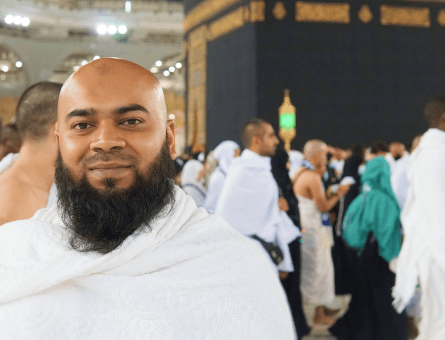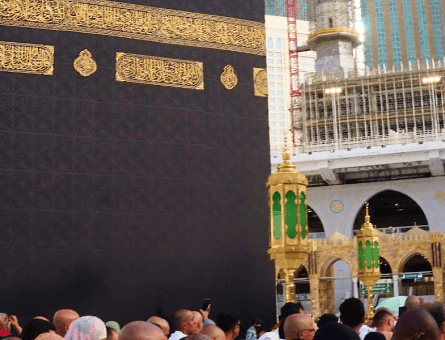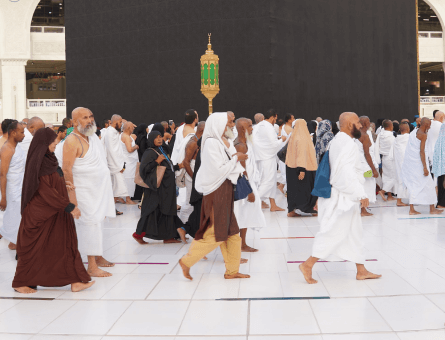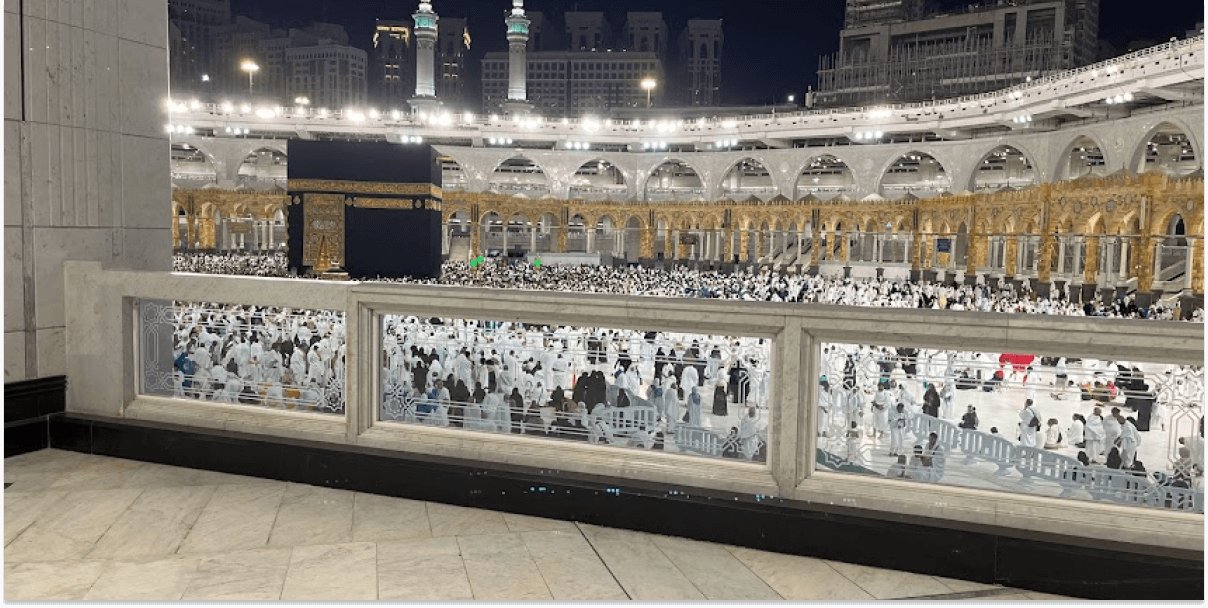History of the Kaaba
There is no place on Earth as venerated, as central or as holy to as many people as Makkah. By any objective standard, this valley in the Hijaz region of Arabia is the most celebrated place on Earth. Thousands circle the sacred Kaaba at the centre of the Holy Mosque 24 hours a day. Millions of homes are adorned with pictures of it and over a billion face it five times a day. The Kaaba being the epicenter of Makkah. The cube shaped building is at the heart of the most well-known real estate in the history of mankind; it is shrouded in black and its fair share of mystery and history.
Who built the Kaaba – The house of Allah?
The Ka`aba, built by the Prophet Ibrahim for the worship of Allah. In reward for the Prophet Ibrahim’s actions Allah rewarded him by calling it Allah’s House and by making it the center towards which all Muslims must face in prayers. According to the Qur’an, Allah promised to bless people through Ibrahim and to give him a great lineage of Prophets through his descendants.
The first son of Prophet Ibrahim was Prophet Isma’il who dwelled in Arabia and from his descendants came the last of all Prophets, the Prophet Muhammad صلى الله عليه وعلى آله وسلم. Visiting the Sacred House of Allah asserts the bond between Muslims and their civilization, traversing the path of Allah’s Prophets and Messengers. The honored Kaaba is the first house established to guide people to monotheism and the worship of Allah. The Prophets were the ones whom Allah sent to guide people to His Worship and they travelled to the places that Allah made pure and sacred: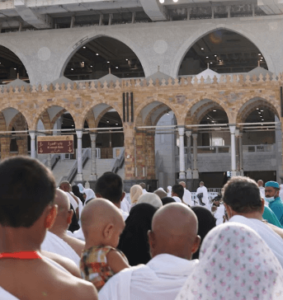
“And we covenanted with Ibrahim and Isma’il that they should sanctify My House for those who compass it around, or use it as a retreat, or bow or prostrate themselves (therein in prayer).” [Surah Al-Baqarah 2:125]
Traveling to visit the Sacred House consolidates the ties between man and the Prophets, especially Prophet Muhammad, the seal of Prophets صلى الله عليه وعلى آله وسلم. The Building of Kaaba
“Behold! We gave the site, to Ibrahim, of the (Sacred) House, (saying): Associate not anything (in worship) with Me…” [Surah Al Hajj 22:26]
Allah tells us that He showed Prophet Ibrahim the site of the House, i.e. guided him to it, entrusted it to him and granted him permission to build the Kaaba, Allah continued the verse:
“…and sanctify My House for those who circumambulate round it, or stand up, or bow, or prostrate themselves (therein in prayer).” [Surah Al Hajj 22:26]
Meaning make it purely for those who worship Allah alone, without any partners. In this verse, Allah mentioned the Tawaf (circumambulation) and Salah (prayer) together because they are not prescribed together anywhere, except the Kaabah; Tawaf is only performed around the Kaaba and the Salah is facing the Kaaba.
As we know the migration of Prophet Ibrahim lead him to the valleys of Makkah, where he was commanded to leave his wife Haajar and son Isma’il, leading to a chain of miraculously magnanimous
events. The Messenger of Allah صلى الله عليه وعلى آله وسلم narrated how the Kaabah came to be:
“Then Ibrahim stayed away from them (Haajar and Isma’il) for a period as long as Allah wished, and called on them afterwards. (Upon Ibrahim’s return) He saw Isma’il under a tree near (the well of) Zam-zam, sharpening his arrows. When he (Isma’il) saw Ibrahim, he rose up to welcome him (and they greeted each other as a father does with his son or a son does with his father). Ibrahim said: “O Isma’il! Allah has given me an order.” Isma’il said: “Do what your Lord has ordered you to do.” Ibrahim asked: “Will you help me?” Isma’il said: “I will help you.” Ibrahim said: “Allah has ordered me to build a house here” pointing to a hillock higher than the land surrounding it.”
The Prophet صلى الله عليه وعلى آله وسلم added:
“Then they raised the foundations of the House (the Kaaba). Isma’il brought the stones and Ibrahim was building, and when the walls became high, Ismail brought this stone and put it for Ibrahim who stood over it and carried on building, while Isma’il was handing him the stones, and both of them were saying,
‘O our Lord! Accept (this service) from us, Verily, You are the All-Hearing, the All-Knowing.”[Surah Al
Baqarah 2:127]
The Prophet صلى الله عليه وعلى آله وسلم added:
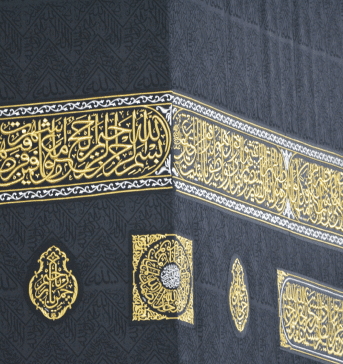 “Then both of them went on building and going round the Kaaba saying: “O our Lord! Accept (this service) from us, Verily, You are the All-Hearing, the All-Knowing.” [Al-Bukhari 4:583]
“Then both of them went on building and going round the Kaaba saying: “O our Lord! Accept (this service) from us, Verily, You are the All-Hearing, the All-Knowing.” [Al-Bukhari 4:583]
Prophet Ibrahim completed the building of Kaaba on the command of Allah. At that time, the building was rectangular in shape and reached the height of four and a half meters. It contained two doors at the ground level but had no roof. Prophet Ibrahim placed Hajar Al-Aswad (The Black Stone) at one of the corners of Kaaba to mark the starting point of Tawaf (circumambulation).
After Ibrahim built the Kaaba, Allah ordered him to:
“And proclaim the Pilgrimage among men…” [Surah Al-Hajj 22:27]
Meaning announce the pilgrimage to mankind and call them to perform pilgrimage to this House, which We have commanded you to build.
It is reported in [At-Tabari 18:605,607] from Ibn Abbas and others that Prophet Ibrahim said:
“O Lord, how can I convey this to people when my voice will not reach them?” It was said: “Call them and We will convey it.”
So Prophet Ibrahim stood up and said: “O Mankind! Your Lord has established a House so come on pilgrimage to it.”
The mountains lowered themselves so that his voice would reach all regions of the Earth, and those who were still in their mother wombs and their father loins would hear the call. The response came from everyone in the cities, deserts and countryside, and those whom Allah decreed will make the pilgrimage until the Day of Judgment, as Allah said:
“..they will come to thee on foot and (mounted) on every kind of camel, lean on account of journeys through deep and distant mountain highways” [Surah Al-Hajj 22:27]
Rebuild of the Kaaba. The building of Kaaba remained the same up till when the Quraysh (The leading tribe of Makkah) rebuilt it.
At that time, the Messenger of Allah صلى الله عليه وعلى آله وسلم was thirty-five years of age, before Prophet hood had reached him. The Quraysh wanted to demolish the Kaabah to rebuild it again, as its walls had cracked and had become very weak. Moreover, the absence of a roof led to theft of the treasures kept inside. The tribe agreed that only pure money would be used for rebuilding, money gained from prostitution, usury or from oppressing people was not sourced.
The Quraysh demolished the structure until they reached the foundations Prophet Ibrahim had laid. During construction they divided the Kaabah into parts and gave each tribe a part to build. When they reached the position of the Black Stone, disagreements erupted as to who would place the Black Stone into position. After the dispute intensified and blood shed was imminent, they agreed that they would allow the first person to enter the precincts of the Kaabah to solve the dispute. The first person to enter was the Messenger of Allah صلى الله عليه وعلى آله وسلم. With joy they exclaimed:
“The trustworthy one has come.” Consequently, they all agreed to listen to him. The Messenger of Allah صلى الله عليه وعلى آله وسلم ordered that a piece of cloth be brought, and he placed the Black Stone in the middle of the cloth. Then he صلى الله عليه وعلى آله وسلم ordered for every tribe to lift an edge of the sheet at the same time and bring it near the Kaabah. Next, the Messenger of Allah صلى الله عليه وعلى آله وسلم took the Black Stone and placed it in its position. This was a wise solution to the dispute which illustrated the wisdom of the Messenger of Allah صلى الله عليه وعلى آله وسلم.
Astonishing Facts about the Kaabah
1 – It has been reconstructed several times
The Kaabah that we see today is not exactly the same Kaabah that was constructed by Prophets
Ibrahim and Isma’il. From time to time, it has needed rebuilding after natural and man-made disasters. There has been an average of one major reconstruction every few centuries. The last renovation took place in 1996 and was extremely thorough, leading to the replacement of many of the stones and re-strengthening the foundations and a new roof. This is likely to be the last reconstruction for many centuries as modern techniques mean that the building is more secure and stable than ever before.
2 – It contained two doors and a window
The original Kaabah had a door for entering and another for exiting. For a considerable period of time it also had a window situated to one side. The current Kaabah only has one door and no window.
“Although Pilgrims cannot use that door to enter the Kaaba, Pilgrims can pray inside Hijr Ismail as when Aisha (RA) asked theProphet Muhammad (PBUH), “O Messenger of Allah! Can I not enter the House?”, the Prophet Muhammad (PBUH) replied, “Enter the Hijr Ismail or Hateem as it is part of the House.” (Sunan an-Nasa’i 2911)”
3 – The drapes were of many colours
We are used to the Kaabah being covered in the trademark black Kiswah (drape) with gold banding that it’s impossible to imagine something different. However, this tradition seems to have started at the time of the Abbasids (whose household colour was black) and before this the Kaabah was covered in multiple colours including green, red and even white.
4 – The keys are held by one family
At the time of the Prophet صلى الله عليه وعلى آله وسلم, each aspect to do with the rites of Hajj was in the hands of different leaders of the Quraysh. Every one of these would eventually lose control of their guardianship except one. On the conquest of Makkah, the Prophet صلى الله عليه وعلى آله وسلم was given the keys to the Kaabah, where instead of keeping it in his own possession; he returned them back to Osman ibn Talha of the Bani Shaiba family. They had been the traditional key keepers of the Kaabah for centuries; and the Prophet صلى الله عليه وعلى آله وسلم confirmed them in that role till the end of time by these words:
“Take it, O Bani Talha, eternally up to the Day of Resurrection, and it will not be taken from you unless by an unjust, oppressive tyrant.”
Whether Caliph, Sultan or King – the most powerful men in the world have all had to obey the words of the Prophet صلى الله عليه وعلى آله وسلم and ask permission from this small family before they can enter the Kaabah.
5 – It used to be open to everyone
Until recently, the Kaabah was opened twice a week for anyone to enter and pray. However, due to the rapid expansion in the number of pilgrims and other factors, the Kaabah is now opened only twice a year for dignitaries and exclusive guests only.
6 – There was a time you could swim around the Kaabah
A great problem the Kaabah faced was that it was situated at the bottom of a valley, when it rained the valley flooded. Being a common occurrence in Makkah and causing of a lot of trouble. For days on end the Kaaba would be half submerged in water. However, the Muslims continued to perform Tawaf, walk or swim, nothing would stop the one of the greatest act of worship. Modern adjustments to the surrounding landscape and flood prevention techniques mean we may never see such sights again.
7 – The plaques inside the Kaabah
For years many have wondered what it looks like inside the Kaabah. The interior of the Kaabah is now lined with marble and a green cloth covering the upper walls. Fixed into the walls are plaques each commemorating the refurbishment or rebuilding of the House of Allah by the ruler of the day. Inside is the only place on Earth that you can pray in any direction you want.
8 – There is another Kaabah
Directly above the Kaabah in heaven is an exact replica. This Kaabah was mentioned in the Quran and by the Prophet صلى الله عليه وعلى آله وسلم. The Messenger of Allah صلى الله عليه وعلى آله وسلم said narrating about the journey of Isra Wa Al-Mi’raaj (Masjid Al-Aqsa, Heaven):
“Then I was shown Al-Bait Al-Ma’mur (Allah’s House). I asked Jibreel about it and he said, this is Al- Bait Al-Ma’mur where 70,000 angels perform prayers daily and when they leave they never return to it (but another 70,000 come to it daily).”
9 – The Black Stone is broken
Many ponder why the Black Stone sits in a silver casing as we see today. Some say it was broken by a stone fired by the Umayyad army laying siege to Makkah whilst it was under the control of Abdullah ibn Zubair. However, most agree that it was excessively damaged in the year 930 by a group called the Qarmatians. Whom attempted in diverting Hajj to their own lands. It was returned to Makkah in 952 damaged and broken in 7 pieces. To keep it protected it was encased in a silver casing as it stands now.
10 – It’s not supposed to be a cube shape
The original dimensions of the house included the semi-circular area known as the Hijr Isma’il. When the Kaabah was rebuilt just a few years before the Prophet صلى الله عليه وعلى آله وسلم received his first revelation, the Quraysh agreed to only use income from pure sources to complete the rebuild. Unfortunately, there was not enough funds to suffice hence they settled for a smaller version of the Kaabah and placed a smaller wall around the remaining area to indicate the original dimensions. Towards the end of his life, the Prophet صلى الله عليه وعلى آله وسلم intended to rebuild the Kaabah on its original foundations but passed away before he could fulfill his wish.
Summary of the history and facts about the Kaaba
The history of the Kaabah is not just an interesting history, but annotates a real and present symbol that connects all Muslims together wherever they may be. It also connects us to our past so that we may derive lessons and feel that we are a part of one eternal mission. The Kaabah reminds us of our shared heritage and bonds. It is a symbol of unity and oneness of the Muslim Ummah and the Angels all created alike by the one creator.
Explore The New Pilgrim App
The Ultimate App
for Hajj and Umrah!





